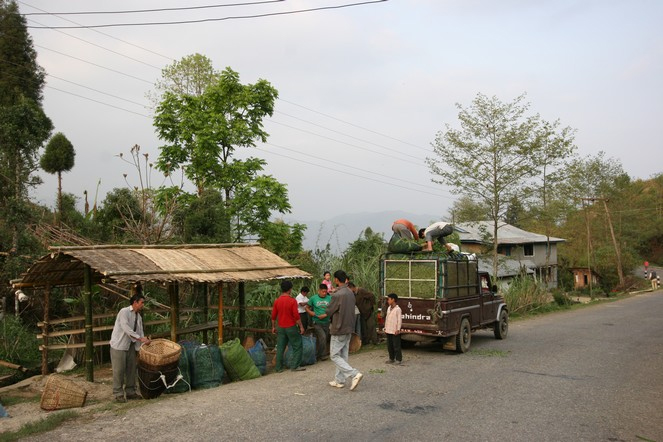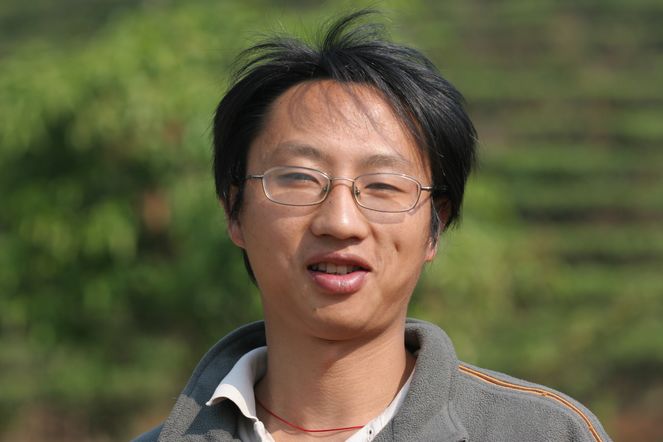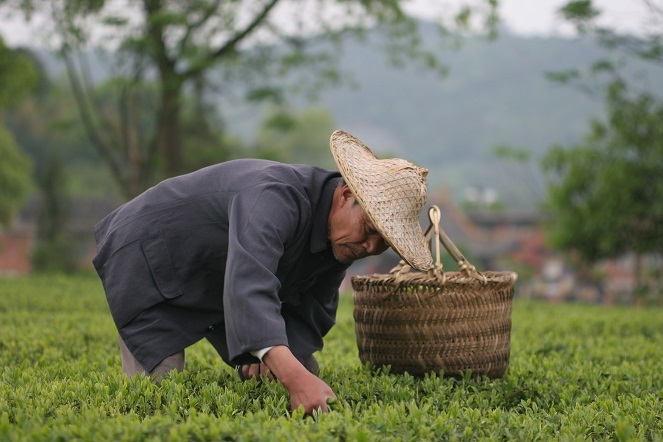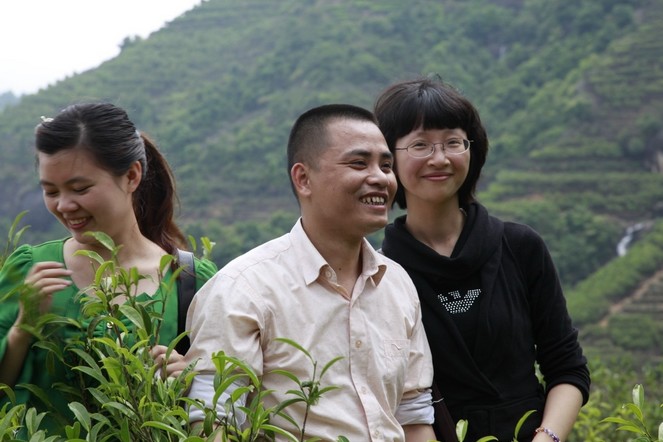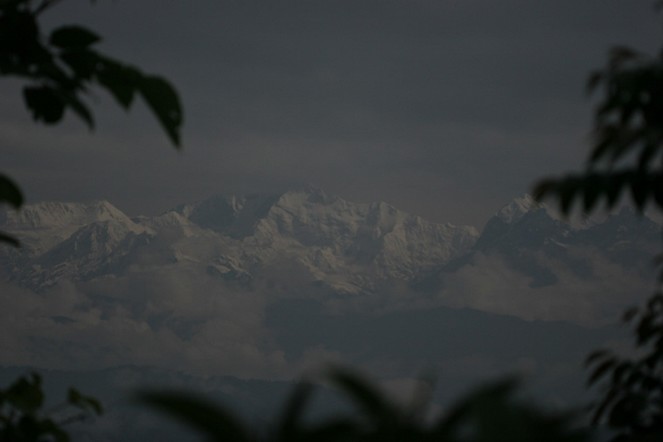In the south of Sri Lanka there are many small-scale producers who grow tea and then sell the fresh leaves to one of the local factories. For them, tea represents one source of income among others, and they are not economically dependent on the price if it falls. They are tied by a yearly contract with a guaranteed price. They choose the factory they want to work with, and the factory is responsible for collecting the leaves. It is a fair system.
Le soin apporté aux théiers entre l’automne et le printemps
Si vous disposez d’un bout de jardin, vous savez qu’entre l’automne et le printemps et à l’écart des périodes de gel il y a toujours du travail, en termes de taille, par exemple. Dans les champs de thé aussi on va mettre cette période à profit pour examiner chaque arbre et lui dispenser les soins nécessaires. Comme pour un fruitier, on va observer la plante avant de procéder à la taille hivernale. Cette taille qui n’a pas lieu tous les ans aide à régénérer l’arbuste.
Gary, a true connoisseur of teas from south-west China
Every year my friend Gary, who lives in Kunming and runs a tea store there, sends me lots of pu erh samples. Raw pu erhs, cooked pu erhs, pu erhs in cake form or loose, pu erhs of every age, from very young to very old. I always look forward to receiving them. I’ve known Gary for more than 20 years. He was young when we met and was working for the state organisation in charge of exporting Yunnan teas. He has an excellent knowledge of all the teas produced in south-west China. Tea is his life.
In China, the tea market has changed
The process of buying tea in China is not what it used to be. Only 20 years ago only the state had the authority to export tea, and every Chinese tea was given a specific reference. Expert tasters would travel the whole country, visiting each tea factory and tasting each tea before giving it a reference number. For example a Grand Yunnan Imperial was given a grade of 6112.
Things have changed a great deal since then. Today those Chinese experts have gone, no doubt to the private sector, and domestic consumption has increased dramatically. Demand now outstrips supply, pushing prices up. And nobody thinks to remember how it was done 20 years ago.
Feng Huang Dan Cong: one of the rarest teas in China
Feng Huang Dan Cong, or Phoenix Tea, is one of the rarest China teas. Just a handful of farmers, including the Huang family, seen here, whom I was delighted to photograph, process these large leaves whose lingering bouquet evokes flowers, fruits, wood and spices by turn. If you love fine teas you should taste this at least once in your life.
Eternal snow of Kanchenjunga
For my Parisian friends who are finding this month of January a little mild, here is the cooling and eternal snow of Kanchenjunga. This massive mountain extends from the ancient royal kingdom of Sikkim to Nepal and Tibet, just a stone’s throw from Darjeeling.
Tea follows us, it accompanies us.
A while ago, in Tunxi in China, I was eating my evening meal in a tea house. Outside it was raining. I used a slow shutter speed to photograph the movement of passers-by, and the reflections of the city on the wet pavements. The window reflected the interior of the establishment. Feeling mischievous, I took a photo of the teapot on the neighbouring table, walking over the silhouettes of people outside.
Tea follows us. It accompanies us. Sometimes we don’t see it but it is near and does us good.
I wish you a very Happy New Year for 2014. I hope you enjoy discovering new flavours. I hope that every day you find a moment of harmony. I invite you to share these moments of happiness with your loved ones. Vivre le thé.
Tasting third-flush Darjeelings
Scales, a timer, a spittoon, a cup to rinse one’s mouth between two liquors if necessary, a shaft of light; everything is ready. Admittedly the building itself is showing signs of wear and tear, but that’s not important; Namring teas retain their incredible aura and I’m about to taste the best of the third-flush, or autumn, pluckings.
The joy of receiving
In Japan, when you receive a gift, you don’t open it. You don’t feel the need to. First, you admire the wrapping, then you thank the person who has given it. You are touched by their attention. You are very happy. You still don’t open it.
This year, what if we too were satisfied with the happiness of receiving a gift, without wondering what it was? What if we took the time to experience fully this wonderful moment, when someone shows us how much they care?
I wish you a very happy festive season!
There’s a tea for everyone
There’s a tea for everyone. Our Turkish friends drink it boiling hot, at any time of day or night, generally out rather than at home. You start by pouring a little tea extract, which is particularly strong, into the glass. Then you dilute it with hot water from the samovar. And you pass the time talking about this and that, glass of tea in hand. Or you watch a football match in the local café, either holding your glass of tea or placing it on the table in front of you.

